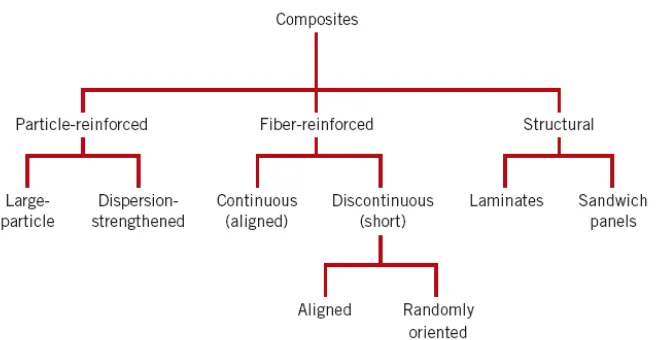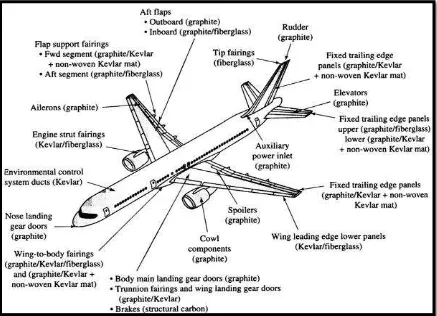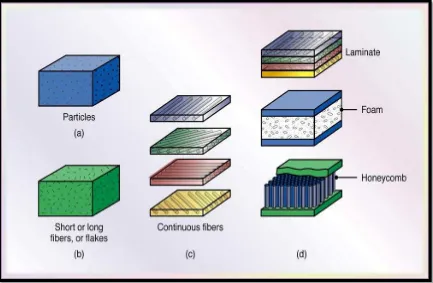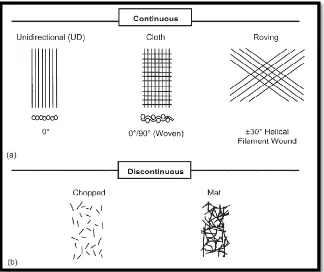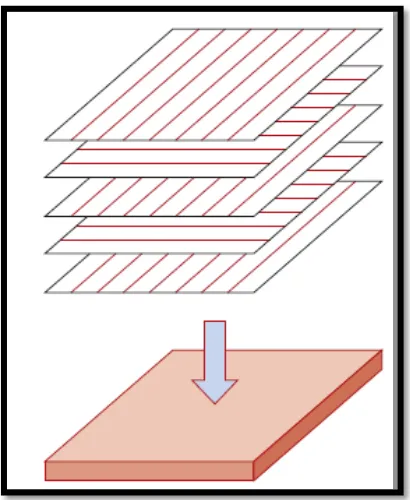UNIVERSITI TEKNIKAL MALAYSIA MELAKA
Investigation Based On Design of Experiment for Woven Composite
Deformation
This report submitted in accordance with requirement of the Universiti Teknikal Malaysia Melaka (UTeM) for the Bachelor Degree of Manufacturing
Engineering
(Manufacturing Process) (Hons.)
By
TENGKU AHMAD DZILKARNAIN BIN TENGKU MOHAMAD
B051010173
891118-11-5455
UNIVERSITI TEKNIKAL MALAYSIA MELAKA
BORANG PENGESAHAN STATUS LAPORAN PROJEK SARJANA MUDA
TAJUK: INVESTIGATION BASED ON DESIGN OF EXPERIMENT OF WOVEN FABRIC DEFORMATION
SESI PENGAJIAN: 2013/14 Semester2
Saya TENGKU AHMAD DZILKARNAIN BIN TENGKU MOHAMAD
Mengaku membenarkan Laporan PSM ini disimpan di Perpustakaan Universiti Teknikal Malaysia Melaka (UTeM) dengan syarat – syarat kegunaan seperti berikut:
1. Laporan PSM adalah hak milik Universiti Teknikal Malaysia Melaka dan penulis. 2. Perpustakaan Universiti Teknikal Malaysia Melaka dibenarkan membuat salinan
untuk tujuan pengajian sahaja dengan izin penulis.
3. Perpustakaan dibenarkan membuat salinan laporan PSM ini sebagai bahan pertukaran antara institusi pengajian tinggi. oleh organisasi / badan di mana penyelidikan dijalankan)
Alamat Tetap:
i
DECLERATION
I declare that this report entitle “Investigation Based on The Design Of Experiment on Composites Deformation” is the result of my own research except as cited in the references.
…………...
APPROVAL
This report is submitted to the Faculty of Manufacturing Engineering of Universiti Teknikal Malaysia Melaka (UTeM) as a partial fulfillment of the requirements for the degree of Bachelor of Manufacturing Engineering (Manufacturing Process) (Hons.). The member of the supervisory committee is as follow
iii
ABSTRAK
ABSTRACT
v
DEDICATION
I dedication for this report to my family, especially: To my late father, Tengku Mohamad bin Tengku Jalil and My mother, Sobah binti Mahmud
For instilling the importance of patience, honest in work and hard work To the families Bahrizal, Asri, Linawani, Syukri, Fathil, Faiz
ACKNOWLEDGEMENT
Praise to Allah for successful completed my Final Year Project 1 (PSM 1). I would like to give special thanks to my helpful supervisor, Dato’ Profesor Dr. Abu bin Abdullah for giving me appreciation, knowledge, and advices guiding me the possibilities to complete this report. Special thanks also to my co-supervisor Mr. Mohammad Hamdan bin Mohd Sanusi from CTRM Aero Composites Sdn. Bhd. whose help, stimulating suggestions and encouragement helped me to coordinate my project.
I also would like to extend my thankfulness to the most precious person in my life, my mother for all her moral support, financial support and also to my friends for never ending reminded me and also give suggestion about data analyze. Not forgotten for the entire lecturer at Faculty of Manufacturing Engineering (FKP), UTeM I very much appreciate for their entire kindness helping and teaching
vii
2.1.1 The Structure Of Reinforced Plastics 8
2.1.1.1 Laminar Composites 10
2.1.1.2 Sandwich Composites 11
2.1.2 Reinforcing Fiber 12
2.1.3 Matrix Materials 12
2.1.4 Properties of Reinforced Plastics 13
2.2 Manufacturing Composites Process 16
2.2.2 Spray-up Molding Process 17
2.2.3 Compression Molding 18
2.2.4 Filament Winding / Pultrusion 19
2.2.5 Vacuum Bag Process 20
2.3 The Experimental Theory 21
2.3.1 Lay-up in Aerospace Manufacturing 22
2.3.1.1 Layup Equipment 23
2.3.3 Composites material use on aerospace (carbon fiber) 31
2.4 Composites Application 32
2.5 Defects in Manufactured Polymeric Composites 34
2.5.1 Spring Back 35
3.4 Preparation of laminate by layup process 40
3.4.1 Flow chart of layup process 41
3.5 Composite part characteristics 43
3.6 Measuring Procedure 46
3.7 Design of Experiment (DOE) 43
ix
4.1Results 45
4.2Aluminum 46
4.2.1 Parameters - 8 plies part, same orientation, same size 46 4.2.2 16 plies part, same orientation, same size 48
4.3Carbon 50
4.3.1 Parameters - 8 plies part, same orientation, same size 50 4.3.2 16 plies part, same orientation, same size 52 4.4Tooling parameters Carbon Vs. Aluminum 54 4.4.1 Comparison on size of part due to same 54
4.4.4 Comparison on size of part due to same 60 orientation (0,45,-45,90) and 16 plies
4.5Comparison In Part Parameter 62
4.5.1 Different in orientation due to aluminum vs. carbon 62 4.5.2 Different in number of plies due to aluminum vs. carbon 63 4.5.3 Different in size of part due to aluminum vs. carbon 64
4.6Discussion 65
LIST OF TABLE
2.1 The vacuum bag components and the function of each component. 23
2.2 Tooling material guide 24
2.3 Types of Tooling 25
2.4 The Aluminum Pro and Con 30
2.5 The general properties of carbon fiber composites 31 3.1 The characteristics of material parameter 42
3.2 The Parameter of autoclave machine 42
3.3 The DOE use to compare the different of tooling 44 4.1 Data for different of parameter part on 8 plies composites 46
aluminum tooling
4.2 The spring back value for 16 plies part aluminum tooling 48 4.3 The spring back value for 8 plies part carbon tooling 50 4.4 The spring back value for 16 plies part carbon tooling 52 4.5 The spring back angle base on DOE 1 54
4.6 DOE 2 result of spring back angle 54
4.7 Spring back data for DOE 3 56
4.8 Spring back data for DOE 4 56
4.9 DOE 5 for comparison tooling parameter 58 4.10 DOE 6 on comparison of tooling parameter 58
4.11 DOE 7 on comparison of tooling 60
4.12 DOE 8 for comparison tooling 60
4.13 Orientation different 62
xi
2.2 Schematic illustration of methods of reinforcing plastics 8
2.3 The orientation of fiber 9
2.4 The stacking of successive oriented fiber 10 2.5 The cross section of a sandwich panel 11 2.6 Effect of type of fiber on properties 13 2.7 microstructure of fiber reinforced epoxy composites 14 2.8 The tensile strength due to fiber orientation 15
2.9 Hand lay-up process 16
2.10 The diagram of Spray-up Process 17
2.11 Compression Molding 18
2.12 Filament winding and Pultrusion Process 19
2.13 Vacuum Bag process 20
2.14 Vacuum Bagging Lay-up before and after vacuum applied 22
2.15 Common vacuum bag molding 23
2.16 L-shaped Graphtie 26
2.17 The L-shaped aluminum tooling for composites deformation 29 2.18 The composites structure on Aircraft 32 2.19 The example of product made using composites 33
2.20 The spring back 35
3.4 The experiment factor, level and response 43
4.1 The CMM to measure the part 45
4.2 The spring back value for 8 plies part aluminum tooling 47 4.3 The spring back value for 16 plies part aluminum tooling 49 4.4 The Spring back value for 18 plies part carbon tooling 51 4.5 The spring back value for 16 plies part carbon tooling 53 4.6 Comparison of tooling parameter due to the size of the part 55
4.7 DOE 3 combine with DOE 4 57
4.8 DOE 5 combine with DOE 6 59
4.9 DOE 7 combine with DOE 8 for comparison of tooling parameter 61
4.10 Graph on different orientation 62
1
1.1 Composites
Composites are the advance materials began during the mid-20th century with the manufacturing of designed and engineered multiphase composites such as fiberglass-reinforced polymer. A composite is materials that consist of two dissimilar materials in which one material forms a matrix to bond together with other material that act as reinforcement. Composite materials can be made up from two materials that are not mixed in each other. The material can be called as a composites if satisfy the three criteria which is
a) Both constituents have to be present in reasonable proportions b) When material constituent have different properties
c) The composite properties are noticeably different from the properties of the constituent
The composites are been created to improve the properties of material that have. For example formula 1 car need to go fast, so instead of using the metal for a race car, carbon fiber are advance material that been used to replace the metal because of the light weight and the toughness of the part and by reducing the weight of the car speed will increase instantly.
INTRODUCTION
Composites can be classifies to several division which are, fiber reinforced, particle-reinforced and structural composites. The type of division are been distinguished depends on the, size, shape, concentration, distribution and orientation of the fiber used in the composites. (William D Callister, 2011). Figures 1.1 show the chart of the division under the composites type.
Figures 1.1: type of division in composites (Source: Materials Science and Engineering, 2011)
The common processes in manufacturing composites are hand lay-up, autoclave processing, filament winding and others. The process is selected based on the application. Figures 1.2 (a) show the hand lay-up process while figure 1.2 (b) show Vacuum Bag process for composite manufacturing.
(a) (b)
Figure 1.2: (a) Hand Lay-up process (source: FLEIX DYNAMIC,2012) (b) Vacuum Bag Process
3
1.1.1 Hand Lay-up Process
Hand lay-up process is the simple method of contact molding. The material is placed on the mold which is been brushed with the resin and shaped according to the mold by hand using a roller. The reinforcement on the mold may consist of various shapes, including prepregs and the orientation can be change according to the application characteristics. The choices of material that can be used using this method are limited. The shape of the product made by Hand lay-up process are based on the mold that been create weather using a CNC machining or fiberglass itself. (SeropeKalpakjian, 2010).
Hand lay-up process is commonly to make a low volume production of product. The laying-up of the material and squeezing the trapped air bubbles while compacts the part will taking a bit of time. In the small air craft production, this type of processing still taking place to make several part of the product.
1.1.2 Vacuum Bag Process
1.1.3 Carbon Fiber
Carbon fiber reinforced polymer is type of composite that widely use on aerospace manufacture. The aerospace technologies commonly use the material because of the lightweight and toughness of the carbon fiber composite. Usually the binder use in the carbon fiber is epoxy. The properties of the composites can be affected by the type of additives use to the resin. This expensive material is evenly used on the automobile industry because of the special properties to help in performance of the car.
1.2 Problem Statement
Even though there are much studies and literatures on composites deformation, but, the studies on effect of material characteristics on composites deformation is less explored. Most of the time, the literature are more focusing only on proposed a parameter for evading the composites spring-back effect. So, this topic is selected to address this gap. This project is focusing on establishing the relationship between material sizing on process of manufacture the material and spring-back deformation.
1.3 Scope
5
1.4 Objectives
The objectives of this project are:
1. To investigate the relationship and effect of material orientation, size and number of plies of the fiber in influencing shape deformation of composite parts using different tooling material on layup process.
2.1 Composites
William D. Callister (2011) describes composites as a different classification of materials began during the mid-20th century to manufacture composite intentionally designed and engineered multiphase composites such as fiberglass. In the other hand, Serope Kalpakjian (2010) define that composites is the combination of two or more insoluble phase and chemically purpose with a recognizable interphase, in such way that the properties and performance are powerful to those constituent acting independently. The combinations of the composite material are known as metal-matrix and ceramic-matrix composites.
Composites materials have increasingly wider applications in air craft, space vehicle, satellites, piping, boats, sporting goods and vehicle. The combination of the material as the fiber reinforcement significantly improve the strength, stiffness and creep resistance to plastics, particularly their strength to weight and stiffness to weight ratio. Composites can be describe as the most general sense, can be thought of a wide variety of material such as cermet, two-phase alloy, natural material and general reinforced or combined material.(Serope Kalpakjian, 2010).
LITERATURE REVIEW
7
Figure 2.1: List of Composite parts in the main structure of the Boeing 757-200 aircraft. (Source: Boeing
commercial Airplane Company)
2.1.1 The Structure Of Reinforced Plastics
Composites structure is a combination of the fiber, matrix, cores and inserts and adhesive. From three type of materials are combining to produce the composite. F. L. Matthews and R. D. Rawlings (1994) deliberate that the reinforcement of the composite came from the fiber or particle use. The foundation philosophy in the design of fiber composite materials is to find or to make the fiber material of high elastic modulus and strength, and preferably low density, and arranging the fiber in a suitable manner to produce useful engineering properties to the final product. Figure 2.2 illustrate the condition of fiber in the composites material.
Figure 2.2: Schematic illustration of methods of reinforcing plastics (matrix) with
(a) Particles, (b) short or long fibers, or flakes, (c) continuous fiber, (d) the laminate structure that
9
Figure 2.3: the orientation of the fiber (Source: Adrian Petru Pop,2010)
2.1.1.1Laminar Composites
A laminar composite is consists of two-dimensional sheets or panels that have a preferred high-strength direction. This laminar composites structure can be found in wood with the similarity of the continuous and aligned fiber-reinforced plastics. The layers are stacked and subsequently cemented together such that the orientation of the high-strength direction varies with each consecutive layer as shown in Figure 2.4 The laminar composite has relatively high strength in a number of directions in the two-dimensional plane because of thelaminations also be constructed using fabric material such as cotton, paper, or woven glass fibers embedded in a plastic matrix. However, the strength in any given direction is, of course, lower than it would be if all the fibers were oriented in that direction. (Msc. ShaymaaMahmood, 2003)
